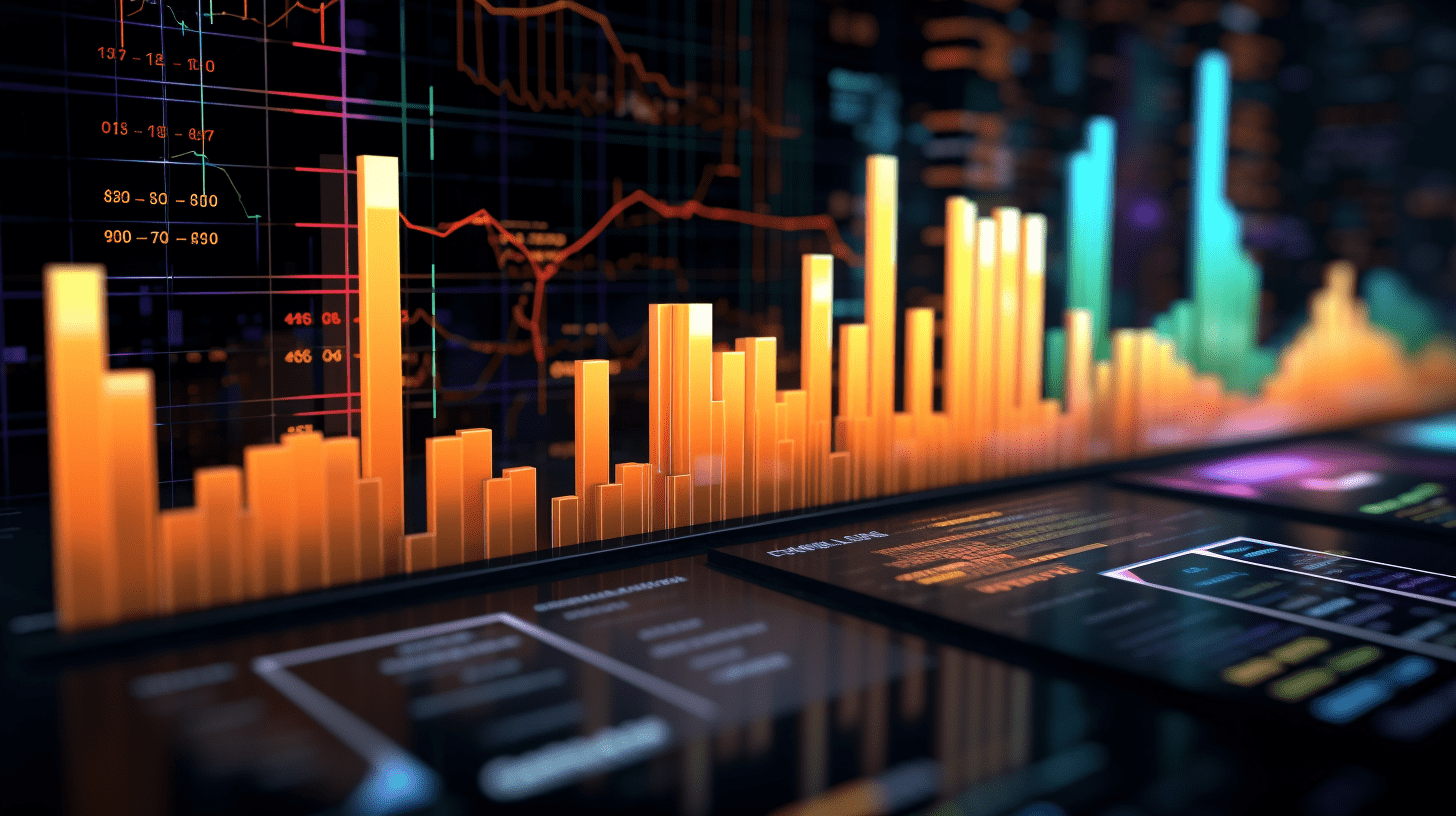CITIC SEC: The interim report season is still dominated by structural opportunities.
It is expected that AI and military industry will be the focus of looking for structural opportunities in the third quarter.
CITIC SEC released a research report stating that compared to the end of 2014 and the beginning of 2019, the current market valuation may not yet support a purely liquidity-driven market, but if the Federal Reserve unexpectedly cuts interest rates in July and the Chinese central bank simultaneously eases policy, it could become a catalyst to ignite market sentiment. Structural opportunities are expected to be a topic throughout the mid-year reporting season, with index opportunities possibly needing to wait until the end of the third quarter to the fourth quarter.
The following is a summary of the research report:
Compared to the end of 2014 and the beginning of 2019, the current market valuation may not yet support a purely liquidity-driven market. As of June 27, the dynamic PE ratios of the Shanghai Composite Index, SSE 50 Index, and CSI 300 Index were 12.2 times, 10.9 times, and 12.1 times, respectively, higher than the valuation levels before the start of the market in late 2014 and early 2019. However, the valuation of small and medium-sized stocks represented by the CSI 1000 may be cheaper than it was at that time. Across different industries, the dynamic PEs of 12 high-profile sectors such as power equipment, new energy, and automobiles are lower than those at the end of 2014 and the beginning of 2019. The valuation levels of other industries are higher than they were at the end of 2014 and the beginning of 2019.
But if the Federal Reserve unexpectedly cuts interest rates in July and the Chinese central bank simultaneously eases policy, it could become a catalyst to ignite market sentiment.
The biggest expectation gap currently is that the Federal Reserve may not cut interest rates until September or even the fourth quarter, but in reality, some Federal Reserve officials have indicated that a rate cut in July is not unlikely. If after the expiration of the tariff exemption on July 9, trade tensions do not escalate, and the Federal Reserve unexpectedly cuts rates in July, followed by a cut in reserve requirements and rates by the Chinese central bank, there may be a scenario of accelerated decline in the US dollar, rise in the Chinese Renminbi, and a sharp increase in expectations for global liquidity easing, which is somewhat reminiscent of the situation at the end of 2014. Currently, there is actually an accumulation of significant redundant liquidity in the market, reflected in the continuous rise of dividends, bonds, and micro-cap stocks, while varieties driven by fundamentals and institutional funds are relatively weak, such as sectors favored by institutions, the Maotai Index, the Ning portfolio, the CSI 300, and the CSI 500 are still in a trough. Once confidence and expectations reverse, bullish sentiment may quickly rise. The recent approval of GUOTAI JUNAN I to provide cryptocurrency trading services immediately ignited the brokerage sector and the overall market, reflecting the market's enthusiasm for going long. The current lackluster price signals are actually in line with expectations and have been relatively fully priced in, reflected as the barbell structure becoming even more extreme and the narrowing of circles becoming more pronounced, which may not prevent a liquidity-driven market rally.
In terms of sector rotation, active funds are possibly shifting away from healthcare and consumer sectors towards technology and finance, and dividends are starting to show signs of stagnation.
In May, the excess returns of consumer and healthcare sectors relative to the technology sector reached a stage of extreme, with consumer and healthcare outperforming for 2.8 months, with the maximum excess reaching 17%, the highest level in the past three years. But we observed a reversal of this trend in June, with a rapid reversal of excess returns of consumer and healthcare sectors compared to technology. As of June 27, the excess return of consumer and healthcare relative to technology was -11.1%. A rotation trajectory can be seen in the six major thematic sectors of technology, consumer, healthcare, new energy, outbound, and dividends, as well as the AI sector, indicating that active funds may be shifting from healthcare and consumer sectors towards technology. As of the week of June 27, sectors with marginal improvement in relative strength (RS) among the six major thematic sectors include: AI, new energy, Siasun Robot & Automation, outbound; sectors with marginal weakening include: consumer, healthcare, dividends. The relative strength momentum of the dividends sector has begun to weaken to a certain extent, showing characteristics of "stagnation."
The popularity of YU7 and the delay of the sale of oil-powered cars in Europe signify that product strength is driving the global electrification process, shifting more towards China and accelerating overall.
China has become the absolute center of the global new energy vehicle market. With models like Xiaomi SU7 and YU7 surpassing Tesla's Model 3 and Model Y, Europe has started to slow down its electrification efforts (Mercedes and Audi recently adjusted their electric vehicle strategies and postponed plans to phase out internal combustion engine cars), indicating a shift of the global industrial chain towards China. Looking ahead, whether it is the Siasun Robot & Automation industry or the drone industry, the underlying technologies, core supply chain links, and market applications are mainly in China. In addition, the more significant significance of Xiaomi YU7 proves that good products manufactured in China can earn profits based on certain cost-effectiveness criteria through product strength, rather than solely through energy carrier form, intelligent form, or price. The YU7 may not be considered cheap in an absolute sense, for example, the Max version has many optional features, and the total price after selecting all options is close to 400,000 yuan, and there may still be changes in policies regarding purchase tax exemptions and national subsidies when the vehicle is delivered next year, but this does not hinder the product's sales. Product strength and the capture of real user needs are the core driving forces for China to lead the global electrification process in the next stage, no longer limited to efficiency, cost, or product form alone.
Expectedly, the next stage of the market logic will be the improvement in the entire industry chain revenue-generating capability in the electrification field and the catch-up in the AI intelligence field.
While YU7 is booming, the "anti-inner loop" trend is also emerging, which signifies the transition of the electrification sector from preemptive investment squeezing the profits of the entire industry chain to reshaping the industry landscape and realizing revenue gradually. Whether it is government guidance, industry coordination, or the continuous phasing out and replacement of production capacity behind good products with production capacity behind general products, all of these indicate an upward stabilization of overall profitability in advanced manufacturing. According to Wind's data, from 2021 to 2024, the share of net profits attributable to listed companies in the manufacturing industry (machinery, national defense military industry, power equipment and new energy, home appliances) in all A-share markets will decrease from 7.4% to 6.7%, while the number of listed companies will increase by 260; during the same period, the share of profits in the banking industry will increase from 39.5% to 41.2%, with only an increase of 1 listed company. This trend will eventually reach a turning point, for example, in the relatively low-profile new energy sector, the competitive landscape and logic are also starting to change in some areas. In the AI intelligence field, China is still catching up, with recent significant increases in token usage for reasoning overseas, but a noticeable decline in active users of DeepSeek in China, showing a decline of -13.35% and -17.24% in April and May respectively, but the very large user base in China also indicates a huge potential market space.
The third quarter will see a restart of IPOs for A-share technology companies, with frequent catalysts for products in the technology sector, which are expected to pick up the momentum for innovative drugs and new consumer trends.
On June 18, 2025, Wu Qing, Chairman of the China Securities Regulatory Commission, proposed the "6+1" policy measures to further deepen the reform of the Science and Technology Innovation Board at the 2025 Shanghai Lujiazui Finance & Trade Zone Development Forum, marking the return of technology companies to A-share listings as a normal occurrence. In the second half of the year, the probability of IPOs of computing chip companies such as Suiyuan Technology and Biren Technology is high. The valuations of such companies largely depend on the capacity and yield of domestic advanced processes, with Semiconductor Manufacturing International Corporation likely to once again become a focus of attention for the entire market in the third quarter. The electronic group of CITIC SEC Research Department believes that in the near future, Semiconductor Manufacturing International Corporation has increased yield through various adjustments in process formulation, and the sudden yield volatility issue in the first quarter has been controlled and is not expected to expand further. In addition, in terms of AI models, GPT-5 may be released in Q3, and the progress of DeepSeek R2 is also worth watching; on the AI front, Meta's upcoming Hypernova in September may officially upgrade the theme of AI glasses to AR glasses, bringing new thematic catalysts; in the AI hardware area, more announcements of Huawei's Shengteng servers purchases may boost the domestic computing power chain.
It is expected that AI and defense will be the focal points in the search for structural opportunities in the third quarter.
1) Currently, overseas AI has formed a closed-loop of "improved reasoning power user stickiness increased demand for reasoning increased need for reasoning power" bringing more commercial space and applications, making the international computational chain a bottom allocation choice, and components such as PCBs, optical modules, and ASIC chips are worth continuing to watch. The domestic chain may also perform well with the aid of market sentiment during the industry, although in the short term it may experience significant fluctuations due to the capital spending of top internet companies falling short of expectations, long-term prospects for leading domestic IDC companies are still vast. In addition, the limited production capacity of advanced semiconductor processes is currently a key factor restricting domestic computing power, and as demand for domestic computing power increases in the future, there is still ample room for increased capacity. 2) The biggest focus in the defense industry in the third quarter will be the expectations of the "15th Five-Year Plan" and the catalyzing effect of Chinese military trade. On June 25, during the NATO Summit, the leaders of member countries decided to increase annual defense spending to 5% of GDP by 2035 (currently at 2%), as the world may enter a new phase of arms race amid increasingly complex environments, China's military trade exports are also worth paying attention to. In addition, the grand military parade scheduled for September 3 at TIAN AN Men in the capital will be an important event catalyst for the industry. 3) During the mid-year season, positioning can be done along two factors strong performance certainty or relatively thorough chip clearance, combining feedback from industry analysts at CITIC SEC Research Department, sectors with strong performance certainty include wind power, games, pets, minor metals, rare earths, and brokers; from the perspective of chip clearance, some sectors within new energy (lithium batteries, photovoltaics) have already fallen to reasonable ranges in terms of valuation, such as lithium equipment, lithium batteries, and photovoltaic inverters.
Risk factors:
Intensification of friction in the fields of technology, trade, and finance between China and the US; Insufficient policy efforts, implementation effects, or economic recovery in China; Unforeseen tightening of macro liquidity at home and abroad; Further escalation of conflicts in regions such as Russia-Ukraine and the Middle East; Unexpectedly slow digestion of real estate inventory in China; Unexpected emphasis changes in Trump's policies.
Related Articles

New Stock News | Shanghai Jin Jiang International Hotels(600754.SH) submit application to Hong Kong Stock Exchange, has developed leading technology infrastructure including WeHotel and other hotel industry leaders.

New Stock News | DeShi Biotechnology submits application for listing on the Hong Kong Stock Exchange. The company's self-developed iMedImage universal medical imaging platform model has successfully achieved commercialization.

KAISA GROUP (01638) extends the deadline for the plan.
New Stock News | Shanghai Jin Jiang International Hotels(600754.SH) submit application to Hong Kong Stock Exchange, has developed leading technology infrastructure including WeHotel and other hotel industry leaders.

New Stock News | DeShi Biotechnology submits application for listing on the Hong Kong Stock Exchange. The company's self-developed iMedImage universal medical imaging platform model has successfully achieved commercialization.

KAISA GROUP (01638) extends the deadline for the plan.

RECOMMEND

Hong Kong Non-Bank Financial Index Rallies 30% Year-to-Date, ETF Units Surge by 2.4 Billion with Insurance Stocks Leading Allocations
27/06/2025

Platinum Surges Again, Hitting Highest Level Since 2014 as Platinum-Gold Ratio Nears Resistance
27/06/2025

WTO Reports Strong Growth in Global Goods Trade Amid Tariff-Driven Import Surge, but Warns of Potential Slowdown
27/06/2025


